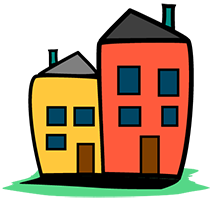Having internal organizational support for implementing Home Usability is vital. This section provides information on communicating to leaders in your organization what is needed to develop a successful program focusing on staffing, and timelines.
Every organization is unique, and how the program gets implemented may vary. However, across any organization there are at least three key commitments that will need to be made.
- Value Home Usability
- It is important that leadership at your organization understands that Home Usability matters and that the Home Usability Program is a strategy for supporting Independent Living. In fact, the Home Usability Program is an evidence based program that has been shown to increase and support community participation for people with disabilities as well as improve quality of life.
- Commit Time
- A core element of the home usability program will be developing community relationships to support the work. Community relationships take time and commitment to build. Developing these relationships does not happen overnight. Depending on the relationships and connections you already have the first year of developing the program may be focused solely on building community connections and determining the resources that are available to support the program.
- Adequately Staff
- Home Usability is best supported by a team of committed individuals. Everyone has a role to play. The time commitments requited by each team member may differ based on where you are at with program implementation. Below are some suggestions for who should be part of your CIL Home Usability Team.
- Someone to manage and develop community relationships and resources
- Someone to manage consumer relationships and support
- Someone to collect data and evaluate the program
- Home Usability is best supported by a team of committed individuals. Everyone has a role to play. The time commitments requited by each team member may differ based on where you are at with program implementation. Below are some suggestions for who should be part of your CIL Home Usability Team.
